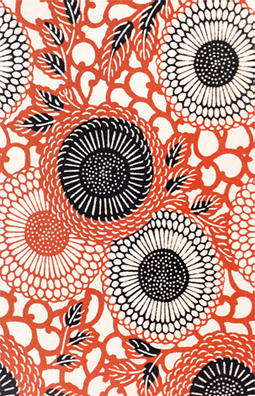Washi The Art of Japanese Paper
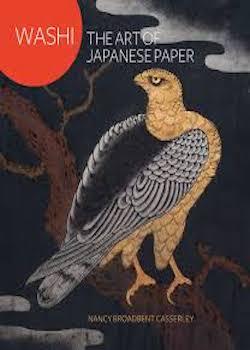
By Nancy Broadbent Casserley
Kew Publishing, Royal Botanic Gardens
2013, 64 pages
ISBN978 184246 486 1
Review by Sir Hugh Cortazzi
This book has been published to coincide with an exhibition of Japanese handmade paper at the gallery of the Norwich University of the Arts from 12 March to 20 April 2013. Nancy Broadbent Casserley, who is a research fellow at the Sainsbury Institute for the Study of Japanese Arts and Cultures in Norwich, is a scholar and curator in the history of design.
This book is based on the Parkes collection of 19th century Washi [和紙] which is part of the collections of the Royal Botanic Gardens at Kew and on ‘The Soul of Japan’ collection of contemporary Washi. It contains colour reproductions of a wide variety of Japanese handmade papers and is an excellent introduction to Washi (literally Japanese paper, but meaning here handmade Japanese paper).
Anyone who goes to Japan and receives a Japanese present will be immediately impressed by the importance attached to wrapping and will notice decorated paper in which many presents are wrapped. The visitor may also be guided to Japanese shops in Tokyo, Kyoto or elsewhere which specialize in selling various types of Japanese paper. If the visitor also develops an interest in Japanese crafts and the Mingei movement [民芸, the Japanese folk art movement developed in the late 1920s and 1930s], he may be induced to visit some of the workshops around Japan where such papers are still made and where he or she can observe the labour intensive process of turning plant fibres into paper. Such paper becomes a medium for traditional and new designs which are aesthetically pleasing and often beautiful. I remember many years ago visiting the atelier of a venerable paper maker called Abe who lived in a remote part of Shimane prefecture and who had been declared a “living national treasure,” so respected is the art of making paper in Japan.
In the introduction Nancy Casserley briefly outlines the history of Washi, noting that paper-making had been introduced to Japan by a Korean priest in 610. She describes the raw materials used and the traditional Japanese process.
Sir Harry Parkes who was British Minister to Japan from 1866-84 was a controversial figure but no one could deny his great energy and dedication to the promotion of British interests. In the summer of 1869 the Foreign Secretary, at the instigation of W. E. Gladstone, the Prime Minister, asked for a report on Japanese paper products and papermaking techniques. Gladstone was concerned by the increasing shortage of cotton and linen rags, from which paper was being made in Europe and North America, and wanted to learn about alternative fibres which the Japanese might be using. Parkes enlisted the services of the British Consuls in the Treaty Ports to collect samples of washi and to describe the techniques used. Parkes sent his report to London in March 1871 together with two boxes of samples of paper and objects made in paper.
Many of the samples sent home by Parkes were decorated washi karakami [唐紙] used on sliding partitions such as the following.The design on the left depicts a phoenix among arabesques and flowers: that on the right silver floral medallions in squares of blue pine branches.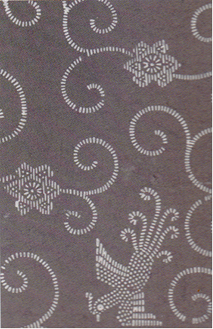
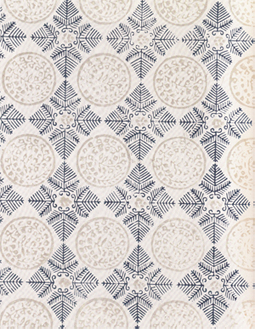
Parkes also sent boxes made from paper as well as items made to look like leather such as pouches. There was even a helmet for a government official which was made of paper: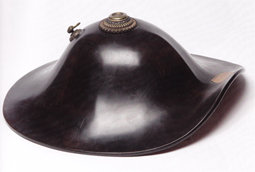
The Soul of Japan Collection of Contemporary Washi arose out of a plan to hold a Washi exhibition in Britain in the 1990s, but because of funding problems it never took place. The Japanese committee decided to call themselves ‘The Washi: The Soul of Japan Committee’ and to produce a multi-volume washi compendium containing samples of washi collected around Japan. Here are a few striking examples from this section. This is from Kyoto and shows chrysanthemums, leaves and arabesques on an indigo base.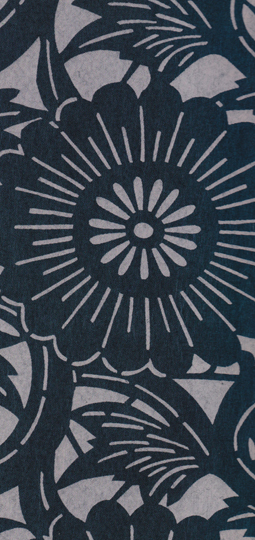
The following is described as a katazome gami sansui [型染め紙] showing village scenes looked at from one side or from the opposite side depicting ships, houses and trees: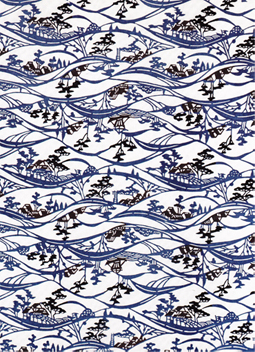
This is a pattern of birds, flowers and waves from the Okinawan tradition: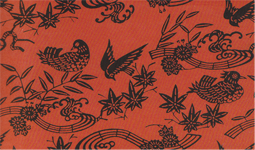
This striking design is on the back fold: